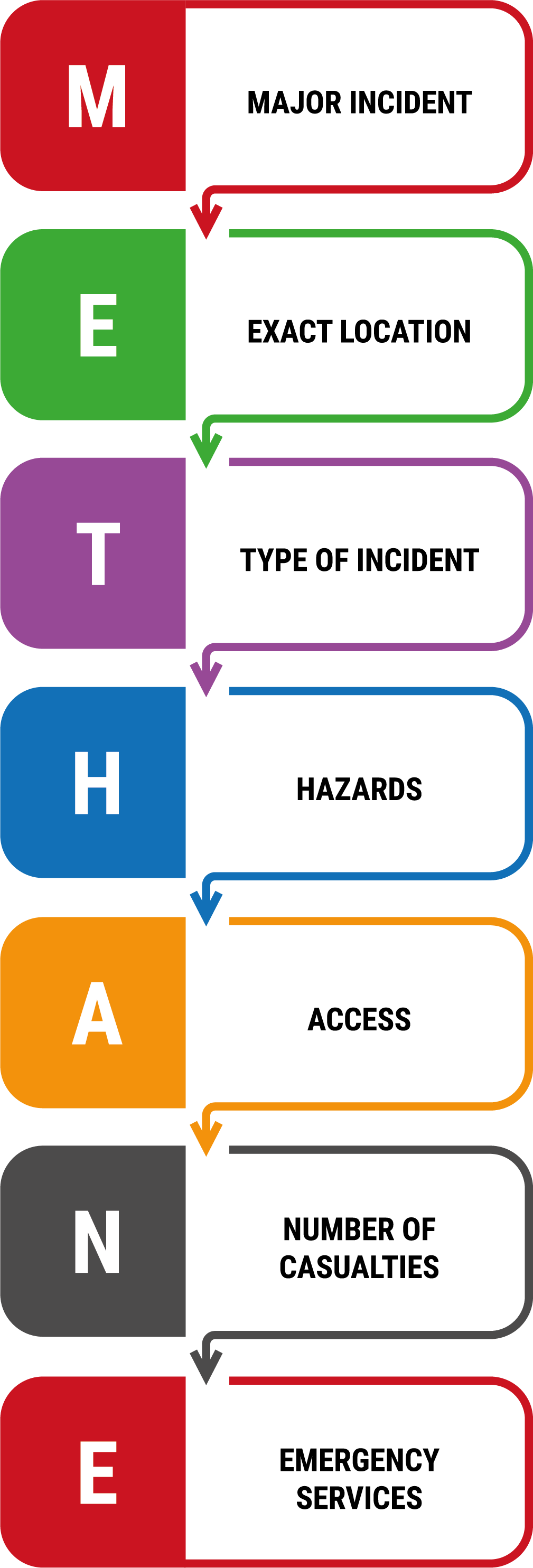M/ETHANE
The M/ETHANE model is an established reporting framework which provides a common structure for responders and their control rooms to share incident information.
It is recommended that this format is used for all incidents and be updated as the incident develops. For incidents falling below the major incident threshold M/ETHANE becomes an ‘ETHANE’ message.
Dependant on your role in your organisation, this is a model you may need to become familiar with. The All Staff e-learning package is designed to help staff understand how to formulate a M/ETHANE message including the opportunity to test their knowledge online. (Please note that unless the package is uploaded to your learning management system locally, results cannot be retrieved once the package is completed as these are not collated by the JESIP Team.)
It is more effective for control rooms to be able to record and share a M/ETHANE message directly into their computer aided dispatch system. Where this is not possible control rooms can use the M/ETHANE form available here.
Other organisations that may be part of a multi-agency response to emergencies may wish to consider ensuring their staff are familiar with the use of M/ETHANE. If you wish to include M/ETHANE in your organisations policies, procedures or training materials download the M/ETHANE graphic here.
As increased numbers of organisations and people use M/ETHANE for passing incident information, the more accurate initial information gathering will be resulting in a faster and more accurate response for the general public.
The first resources to arrive on scene should consider their own safety and send the M/ETHANE message so that situational awareness can be established quickly. The information received through multiple M/ETHANE messages will gradually build to support shared situational awareness in those responding to the incident and between control rooms.
M Major Incident
Is this a Major Incident – yes or no?
Decide whether the situation should be declared a major incident. It may be a Major Incident for your service but not others.
If no, continue complete an “ETHANE” message but regularly review the situation in case the incident escalates and becomes a Major Incident at a later stage.
E Exact Location
Be as accurate as possible, use street names, landmarks, building numbers and post codes. You may also consider using GPS coordinates, latitude and longitude or what3words where these are accepted and understood by your organisation.
T Type of Incident
Define the exact nature of the incident, for example, road traffic collision, explosion or building collapse.
H Hazards
Include the hazards that are known to be present or suspected, and those that could potentially arise.
A Access
Describe the routes that are safe to use and provide access to the incident. This should also include access to any relevant Rendezvous Point (RvP). In the case of a Chemical, Biological, Radiological and Nuclear (CBRN) incident, it may also include areas to avoid. Consider egress routes as some organisations will come and go from the incident such as the ambulance service transporting casualties.
N Number of Casualties
Determine the number of casualties and if possible the level and severity of injuries.
E Emergency Services
Which, and how many, emergency responder agencies are required or are already on-scene?

